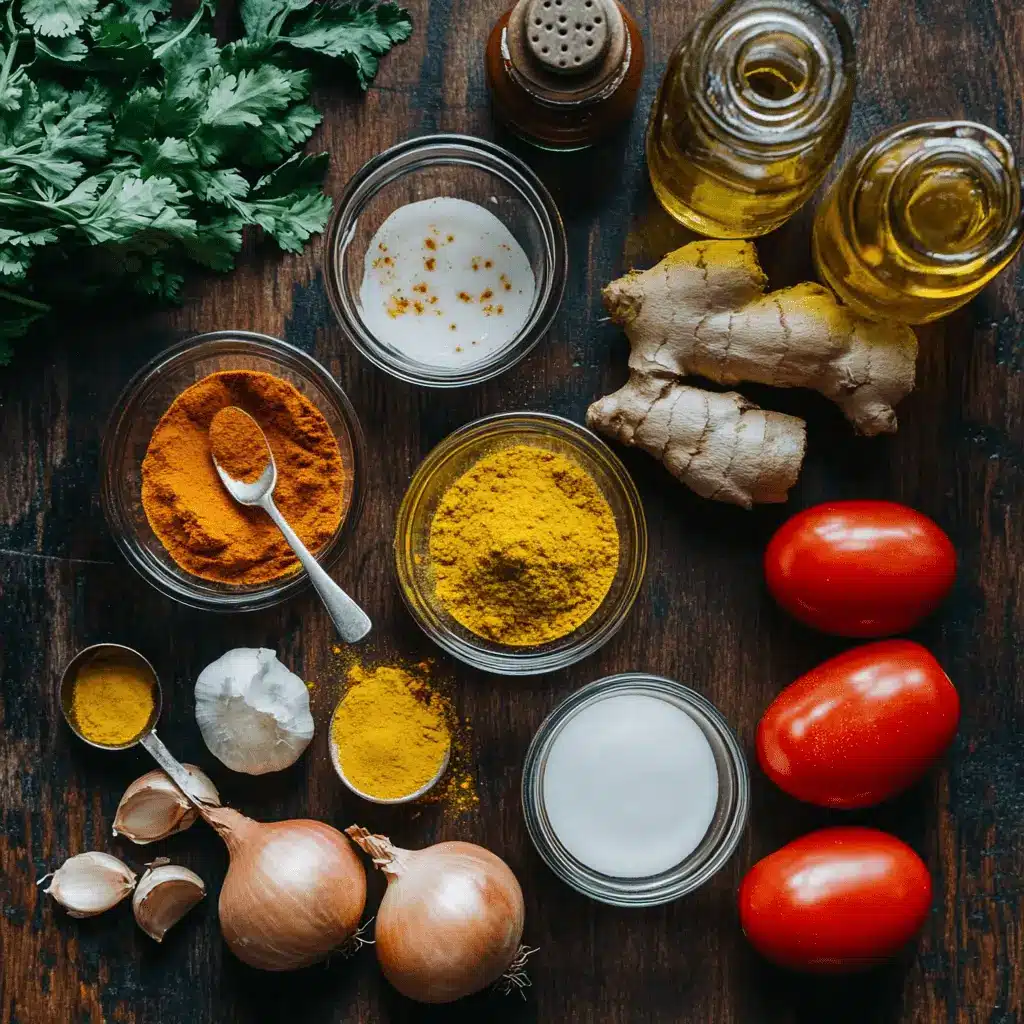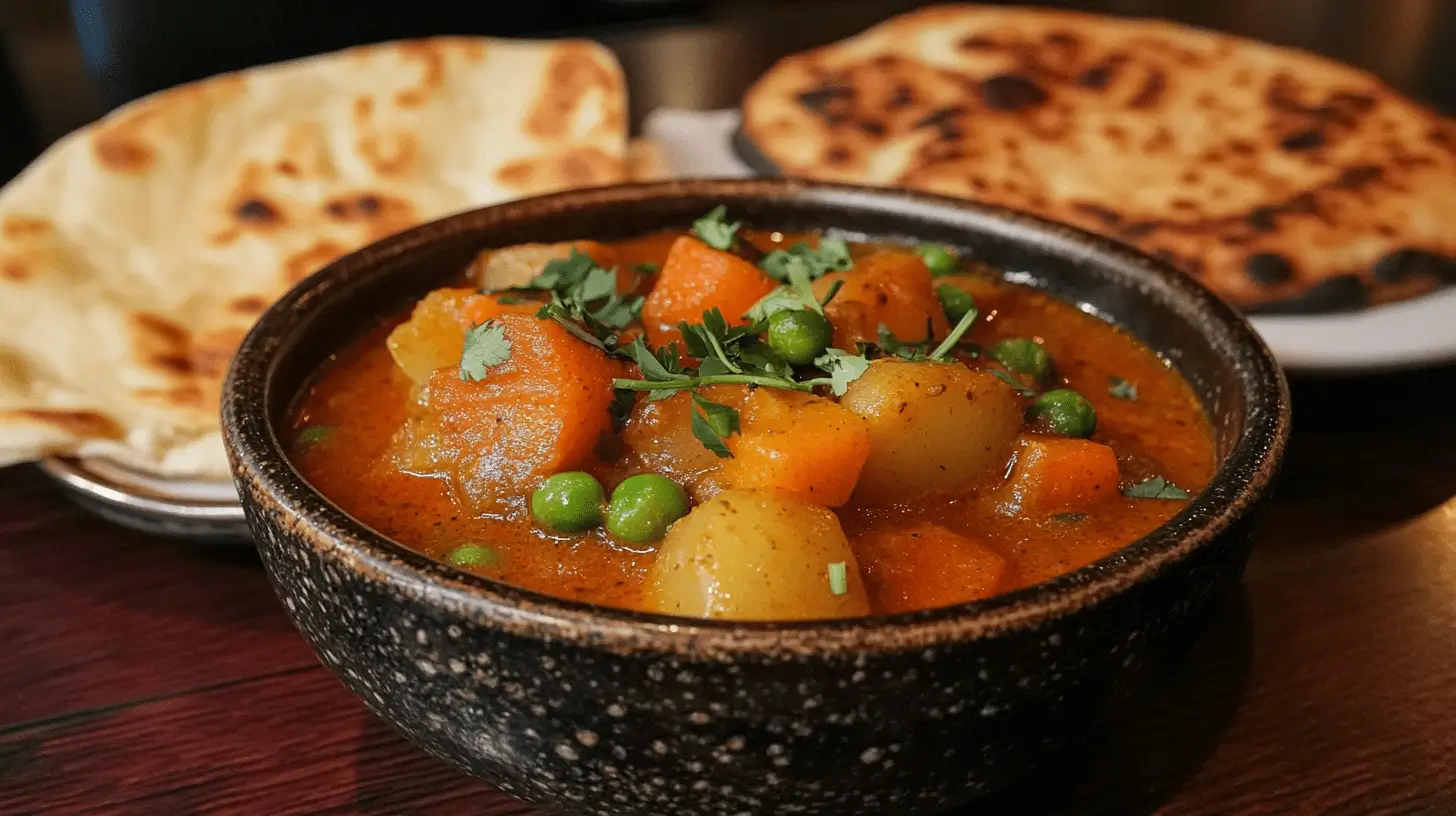This guide teaches you how to make delicious vegetable curry. We’ll cover the ingredients, what they do, different types of vegetable curry, and step-by-step instructions. We’ll explain different cooking methods and show you how to make it your own.
Table of Contents
Understanding Curry: Spices and Flavors
What is Curry?
Curry is a dish with many different flavors. It uses a mix of spices to make a tasty sauce. The spices give curry its unique taste.
Key Spices in Curry
- Turmeric gives curry its yellow color and a slightly bitter taste.
- Cumin adds an earthy flavor.
- Coriander offers a fresh, citrusy note.
These spices work together to create complex flavors. For an alternative blend of spices, check out this Southwest Spice Blend that can add a unique twist to your curry.
Spice Blends: Creating Your Own Curry
Many spice blends exist, but you can make your own! Start with a base of turmeric, cumin, and coriander. Then, add other spices like chili powder for heat, or ginger and garlic for extra flavor. Experiment to find what you like best!
For more ideas on seasoning, check out this Stir-Fry Seasoning to explore different ways of enhancing flavors.
Adjusting the Spice Level
- Chili powder adds heat to curry. Use less for a milder curry, and more for a spicier one.
- You can also use different types of chilies to change the heat level and flavor.
- Taste as you go and adjust the spices to your preference.
Choosing the Best Vegetables for Your Curry
Seasonal Vegetables for Flavor
The best vegetables for curry depend on the season:
- Summer: Tomatoes, zucchini, and eggplant add sweetness and moisture.
- Fall & Winter: Potatoes, carrots, and cauliflower provide a nice texture.
- Spring: Peas and green beans create a lighter curry.
For more ways to use cauliflower in your cooking, check out this Air Fryer Cauliflower Tacos recipe.
Vegetable Combinations
Many vegetables work well together in curry:
- Potatoes and peas for a classic combination.
- Eggplant and tomatoes make a rich sauce.
- Carrots and cauliflower add color and texture.
Don’t be afraid to experiment!
Preparing Vegetables for Cooking
- Cut vegetables into similar-sized pieces for even cooking.
- Smaller pieces cook faster than larger ones, ensuring tender and flavorful vegetables.
Storing Vegetables
- Keep vegetables fresh by storing them properly.
- Most vegetables last longer in the refrigerator.
- Store them in airtight containers or bags to prevent drying out.
Main Ingredients for Vegetable Curry

Spices: The Heart of the Curry
Spices give curry its signature flavor. Keep them fresh by storing them in airtight containers in a cool, dark place.
Onions, Garlic, and Ginger
These three add a base flavor to your curry. You’ll use a fair amount of them.
Tomatoes: Fresh or Canned?
- Fresh tomatoes taste great but require more prep.
- Canned tomatoes are convenient and work just as well.
Coconut Milk and Vegetable Broth
- Coconut milk makes the curry creamy. Use full-fat coconut milk for the richest flavor.
- Vegetable broth adds liquid and enhances the taste.
Cooking Oil
- Coconut oil adds a coconut taste.
- Vegetable oil is neutral.
For more creamy and flavorful dishes, check out these Mediterranean Diet Soup Recipes for more inspiration.
Building the Curry Base: Sautéing Aromatics and Spices
Sautéing Onions, Garlic, and Ginger
This step builds the base flavor of your curry.
- Heat 2 tablespoons of oil in a pan over medium heat.
- Add chopped onions and cook until softened.
- Add garlic and ginger, cooking for another 1-2 minutes.
Be careful not to burn them!
Working with Spices
- Add turmeric, cumin, and coriander to the pan.
- Stir for 30 seconds to release their aroma.
This step is crucial—cooking spices too long can make them bitter!
Cooking the Vegetables
Stir-Frying Vegetables
- Heat oil in a pan.
- Add chopped vegetables and stir-fry until tender-crisp.
- Works well for firm vegetables like carrots, broccoli, and cauliflower.
Simmering Vegetables
- Add vegetables to a pot with broth or water.
- Simmer on low heat until tender.
- Best for soft vegetables like potatoes, peas, and spinach.
Creating the Creamy Curry Sauce
Adding Coconut Milk and Broth
- Pour coconut milk into the pan and stir.
- Add vegetable broth to adjust the consistency.
Simmering for Flavor
Let the curry simmer for 10-15 minutes. This thickens the sauce and blends the flavors.
Achieving the Right Consistency
- If too thin: Simmer uncovered to reduce liquid.
- If too thick: Add broth, one tablespoon at a time.
For a thicker sauce, try a cornstarch slurry (1 tablespoon cornstarch + 2 tablespoons water).
Exploring Different Vegetable Curry Styles
Mild Vegetable Curry
- Uses less chili powder.
- Sweeter vegetables like carrots and potatoes create a milder flavor.
Medium Vegetable Curry
- Moderate chili powder.
- A mix of vegetables like peas, cauliflower, and green beans.
Spicy Vegetable Curry
- Uses extra chili powder or fresh chilies.
- Best vegetables: Eggplant and potatoes.
Regional Variations
- Indian curries: Heavily spiced with complex flavors.
- Thai curries: Often use coconut milk and lemongrass.
Serving and Storing Your Vegetable Curry
Serving Suggestions
- Serve hot with fluffy white rice.
- Pair with naan or roti (soft flatbreads).
- Add a dollop of yogurt or raita to cool down spicy curries.
Storing Leftovers
- Let curry cool completely before storing.
- Keep in an airtight container in the refrigerator for 3-4 days.
Reheating Your Curry
- Stovetop: Reheat over medium-low heat, stirring occasionally.
- Microwave: Heat in short bursts, stirring in between.
Conclusion
This guide will help you make a delicious and flavorful vegetable curry. Remember to have fun experimenting with different spices, vegetables, and cooking styles!

Vegetable Curry
Equipment
- Large pan or wok
- Pot
- Pressure cooker (optional)
- Airtight Container
- Saucepan
Ingredients
- Variable Spices (turmeric, cumin, coriander, chili powder, etc.) Store in airtight containers
- 1-2 medium Onions
- 2-4 cloves Garlic
- 1-2 inches Ginger
- 1-2 cups Tomatoes Fresh or canned
- 1 can (13.5 oz) Coconut Milk Full-fat recommended
- 1 cup Vegetable Broth
- 2 tablespoons Oil Coconut or vegetable oil
Instructions
- Sauté onions, garlic, and ginger in oil until softened. Add spices and cook for 30 seconds.
- Add vegetables (cut into similar-sized pieces). Stir-fry firmer vegetables, simmer softer ones, or pressure cook.
- Pour in coconut milk and vegetable broth. Simmer for 10-15 minutes, or until sauce thickens.
- Serve hot with rice, naan, or roti. Optional: add plain yogurt or raita to cool down spiciness.
- Store leftovers in an airtight container in the refrigerator for 3-4 days. Reheat gently on the stovetop or in the microwave.

